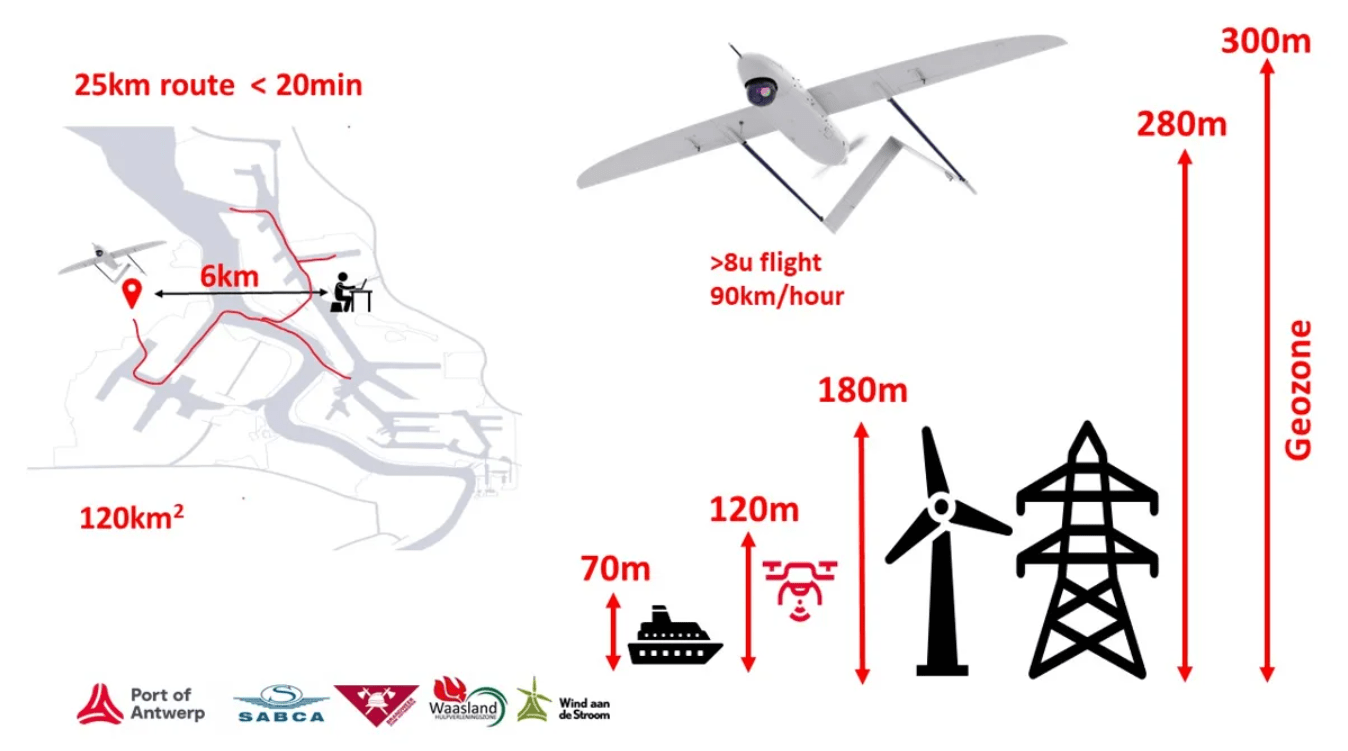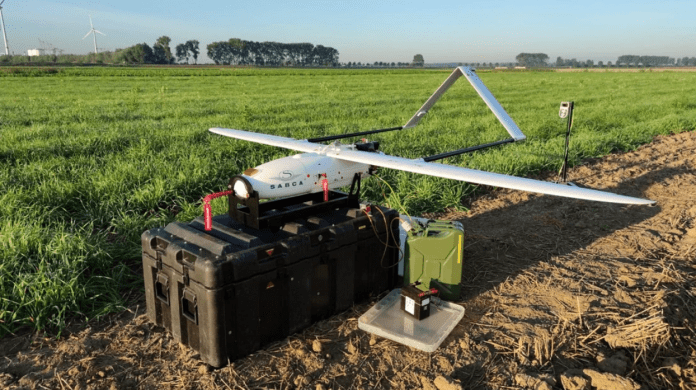The Port of Antwerp has carried out trials for small, unmanned aircraft called “fixed-wing” as their use is being increased for the safety of ports.
In cooperation with safety partners and its technology partner Sabca, Port of Antwerp used drones to provide images of realistic incident scenarios, while they can fly at high altitudes and provide an overall view of the entire port.
The utilisation of drones facilitates safety within the Antwerp Port’s complex environment of over 120 km², as a “fixed-wing” drone can fly around for more than eight hours and take pictures with a camera capable of zooming 30 times from a height of 280 metres.
Recently, the second busiest port of Europe tested out various use cases in collaboration with Waasland Emergency Assistance Zone, the Antwerp Fire Service and Sabca.
The images recorded by the unmanned aircraft of four realistic emergency situations (a container fire, the rescue of a person in distress on top of a windmill, the rescue of a drowning person and the rescue of a man overboard), will provide an insight into the possibilities of using unmanned aircraft of that sort within the port environment.

“The port’s goal is to put in place an operational network of drones by 2022 in order to provide a ‘live feed’ of the various port activities,” explained Innovation Platform Manager at Port of Antwerp Authority, Bob Spanoghe, who went on to add that this will enhance the work carried out by the entire port community and “will enable us to have a more accurate sense of what is going on within the port”.
Furthermore, the CEO of Sabca, Thibauld Jongen, commented that drones will be indispensable in the near future when performing high-risk tasks and that in collaboration with Port of Antwerp, the companies can make various operations safer and more efficient by using the unmanned aircrafts for inspections, transporting goods and surveillance.
This expertise can be also used for other projects such as the automatic transportation of medical samples between hospitals, carrying out inspections of wind turbines at sea, measuring radiation at industrial sites and conducting surveillance assignments off the Belgian coast, according to Jongen.
In the future, Port of Antwerp intends to maximise the assistance provided to the Harbour Safety & Security (HSS) service and its safety partners through the use of drones. The types of tasks that can be performed include inspecting infrastructure, surveillance and monitoring, incident management, berth management and the detection of oil spills or floating waste, according to the Belgian port.







